When I say “gardening,” I’m not talking about tilling up the acre behind the ol’ homestead. Your garden may be a large plot or some containers on your apartment patio or a small herb pot on your kitchen counter. My garden is a couple of average-sized raised garden beds behind our home on a normal city lot.
For several years now, it has provided my family of four with cheap produce and free entertainment. We grow a summer garden of tomatoes, herbs, garlic, onions, rhubarb, lettuce, beans, and cucumbers.
My husband and I love the whole process. We still get a kick out of dropping a tiny seed in the ground and watching it grow into something edible. My daughter would happily dig in the dirt for hours. With very little extra effort on my part, she is learning about worms and soil and seeds and plants and… stain remover. And the crazy part? She will eat vegetables in the garden that she wouldn’t touch with a ten-foot pole at the dinner table.
By the way, remember our little seed germinating project? If you haven’t done it with your kids yet, what are you waiting for? It’d be a perfect indoor activity for this wet, drippy weather and (hopefully temporary) forced isolation. You can only watch Thomas the Tank Engine so many times.
The picture above shows how much our seeds grew in one week.
As I have grown more confident and knowledgeable on summer gardening, I have had a growing (ha!) desire to learn more about cool weather crops. Some plants, like peas or spinach, tolerate this cool, wet spring weather just fine.
They can be planted in the ground now and picked as you are planting your summer garden. I’m not sure how I missed out on this information for so many years. I feel kind of like the kid who realizes Santa Claus is, in fact, not real. Seriously!? Why didn’t someone tell me sooner?
This year, I am going to experiment with gardening from March to October, and I am taking you with me. You might want to grab a pair of boots first.
Here’s my plan:
- Plant some early vegetables in the ground in the next week or two. Gardening in raised garden beds lends a slight advantage because the soil stays warmer and drains better than an average garden plot. For best results, wait until your soil has dried out a little and can be worked up before planting.
- Start germinating some warm season seeds (see list below) indoors to plant when the weather warms up and dries out.
- Figure out a way to keep the baby from eating rocks while the toddler plays in the dirt. Hmm. Suggestions?
Seeds can be purchased online or at Fred Meyer, Bi-Mart, or any garden center or home improvement store for el cheapo right now. I’ve compiled two planting lists (alphabetical, not comprehensive) to help you make your own plan. Simply follow the planting directions on the back of the seed packet or seedling marker.
Cool Season Crops (plant late spring, early summer, early fall):
artichoke, asparagus
beets, broccoli
cabbage, carrots, cauliflower, chard, chives
kale, kohlrabi
herbs (not basil or cilantro)
lettuce
onions
peas, parsley, potatoes
radishes, rhubarb
spinach, strawberries
Warm Season Crops — Heat! (plant after the last frost – early summer):
basil, beans
cilantro, corn, cucumbers
eggplant
melons
peppers, pumpkins
squash
tomatoes
zucchini
********************************************
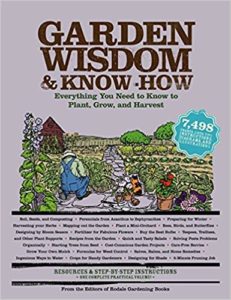
Additional Resources:
Garden Wisdom & Know-How: Everything You Need to Know to Plant, Grow, and Harvest (Amazon) — in one huge book
Portland Nursery — Monthly tips as well as local events & classes (check for cancellations due to the current crisis)
Sunset- Western Garden Ideas — Excellent online tutorials and monthly gardening checklists according to climate zones (note that their system differs from the USDA’s hardiness zone map)
Western Garden Book of Edibles (Amazon) and The Edible Garden (Amazon) by the editors of Sunset magazine
Looking for more resources and ideas?
Find more gardening posts here.
Follow Frugal Living NW on Pinterest!
Fantastic range of boards from best recipes and tips for frugal living to gardening and budgeting help.
This post may contain affiliate links. See the disclosure policy for more information.
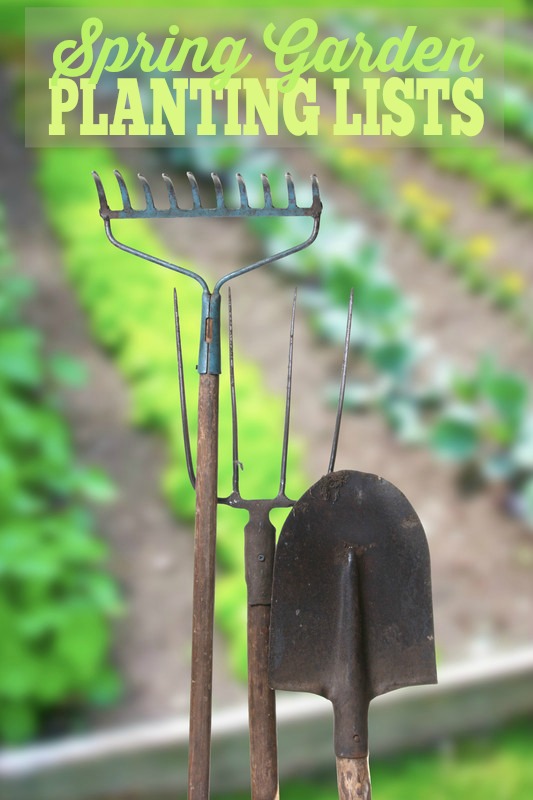

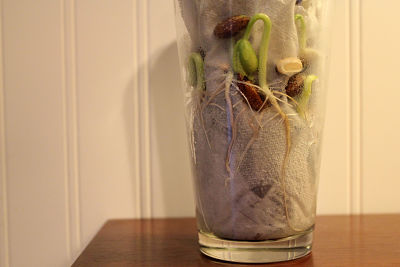

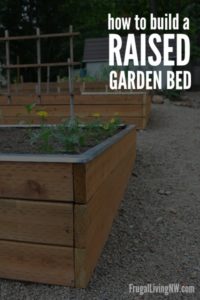
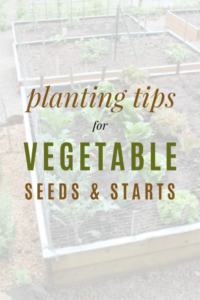
I think Steve Solomon’s Gardening West of the Cascades is the best book on cool season crops in our climate.
Getting a little extra out of the garden on either side of the season is a huge money saver. Lettuce is one of the most lucrative plants you can grow in the NW. There are seed varieties that will easily take you from March into November.
A tip I can share is cilantro. I’m a little bit north of you, near Olympia WA. So this should work even better in the Portland area.
Cilantro does great in cooler weather. I start planting seeds every week, beginning in early April.
Once the weather heats up the cilantro will want to go to seed. It’s easy to collect the mature seeds and then you have a supply of coriander too! This will also become next year’s seed stock.
Many years, I don’t even have to plant more. Letting some of the seed fall produces plenty of volunteers.
I’m so excited to get my Spring garden going! Thanks for this list!
I’m not the gardener….I leave that to my husband. He definately has the green thumb! I’ll pass along this series to him….Thanks!
I thought I’d leave a quick note, though about a book I found for him: “The Dirt Cheap Green Thumb” by Rhonad Massingham Hart. It’s an easy-to-read resource for gardening on the cheap.
Seed germination is important, too. I hate buying cheap seeds and then finding out only 50% come up. I don’t mind spending a little extra money on a local seed company like Territorial Seeds and having a more profitable and successful garden. Your local Master Gardener can tell you what plants have been designed for your specific area (ie Tomato varieties) and Steve Solomon has some great gardening books for PNW gardeners, too. I’ve been landscaping our acre with edible plants for the last 10 years, and you’d be surprised what all you can grow with a little coaxing. We live outside of Portland, OR and we are growing everything from berries and filberts to kiwis and blood oranges.
I, too, have started my garden this year. I’m in California, so I can start my Summer garden a bit earlier. I use left over egg trays and a little potting soil, though. This makes it very easy to transplant the seedlings to bigger pots. I’ve also made a sprouting chamber/greenhouse out of an old crib I couldn’t give away. I just took off the two sides and zip-tied them to the end rails, so now I have three shelves including the bottom spring. All I have to do is to put a clear drop cloth over it for the greenhouse effect. The bonus is that it’s on wheels and I can roll it in and out of the garage pretty easily. I did it this way this year because I had so many problems with gnats/whiteflies last year inside the house.
Cheers, my fellow garden gnomes…
This site has a lot of helpful hints (how to start, etc.) for those who garden in small spaces. 🙂
http://www.squarefootgardening.com/
I planted my seeds indoors a week and a half ago. Everyday my husband comes home from work I take him straight to the peet pots and I turn into a little kid! “LOOK!! LOOK!!” I LOVE planting a seed a watching it begin to poke through the soil!!!
Meranda, I am totally with you. I have even been losing sleep as I mentally plan out my garden. I know I have issues, but I am ok with that. 🙂
Peas are really, really easy, but they climb. I just use posts and string twine back and forth to give them a fence to climb on. Has any one frozen peas? What would we do? Blanch, freeze on cookie sheet, toss in bag?
For those of you that grow rhubarb… do you have dogs? It freaks me out, but I love rhubarb. What to do?
Also – how do you all handle the perinnials like rhubarb, asparagus, etc? Does it have it’s own bed or container?
I am curious about this, too. I have tried blanching and freezing beans in the past, but it was a big flop. When I thawed them, they were mushy and tasteless.
I found these directions:http://www.pickyourown.org/freezing_peas.htm
I haven’t tried this one, but all of the other tutorials I’ve used from this site have turned out well.
We have 4 huge rhubarb plants that THRIVE in our lame soil so we grow those in a spot next to our raised beds. I don’t have dogs, but I do have kids that stick everything in their mouths. I read that a 145-lb person would have to eat 11 pounds of rhubarb leaves to cause death. That would be one rhubarb-leaf loving dog. So you should be safe unless your dog really chows down on foliage?
More on rhubarb in this post: http://www.frugallivingnw.com/frugal-homemaking/frugal-homemaking-growing-rhubarb/
So, Emily, are you waiting until next week to start germinating your seeds, or are you germinating this week? I usually do a summer garden, but I would LOVE to learn how to grow cold season crops!! I’ve never done that before, and yet those are probably the ones we eat the most!
I am planning to put my cold season seeds straight in the ground in the next week or so. They can handle the cold and wet and even a late frost or two.
I think I will wait until April to start germinating my warm weather seeds in soil indoors (although I know many people who have already started theirs). I am going to give my vegetable starts 4-6 weeks inside and 1 week outside before putting them in our raised beds. My husband and I usually put our summer (warm weather crops) garden in around Memorial Day weekend.
Can you give us a heads up so I can copy you?! I’m such an “organic” gardener . . . aka, I just put plants in the ground, leave them alone and reap the harvest. Totally LAZY and it ends up being a mess. I have already determined to do better this year!!! I have some great raised beds that need some lovin’!
My favorite place to buy heirloom seeds is http://www.victoryseeds.com. They are located outside of Portland and they have tons of great resources on the site for planting on Oregon. Especially for first time gardeners.
Thanks Emily. I love your posts and this is just the inspiration I needed to get something in the ground in our yard before May. 🙂
Does anyone have some frugal tips on the best places/times to shop for these seeds? I’ve never done a garden in this part of the country before and I’m not sure if the prices vary much between stores.
The ones that are pictured can be found at Bi-Mart at pretty good prices!
Right about now Bi-Mart has them on sale for 1/2 price-haven’t noticed if it has started yet.
I just bought seeds (and they had a good variety-vegetables and flowers) at the Dollar store for 4/$1. I am going to do the germinating project with my son’s class tomorrow-each one will have a plastic see through cup to do their own seeds. Thanks for the idea!
Also as I had radish seeds left over, and a pot with soil that I had beets in last year (I have gophers issues, so can’t plant root crops in the ground)-I planted radishes when I got home today as it is on the cool weather list. I too have planted a garden every year, but haven’t tried the cool weather ones in the spring-so thanks you have inspired me! Also see I have lettuce seeds-so that will be next!